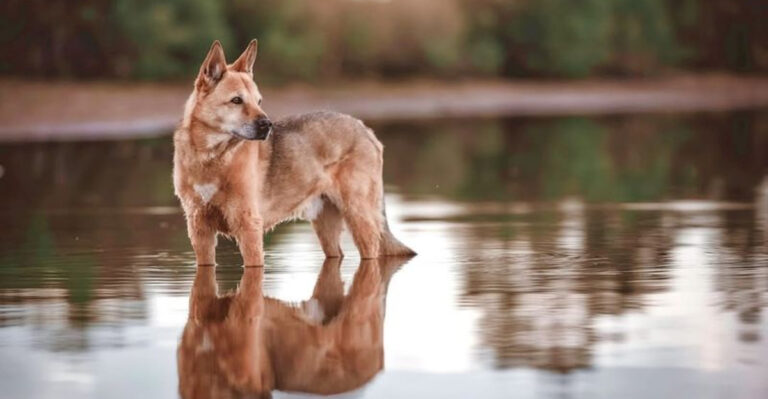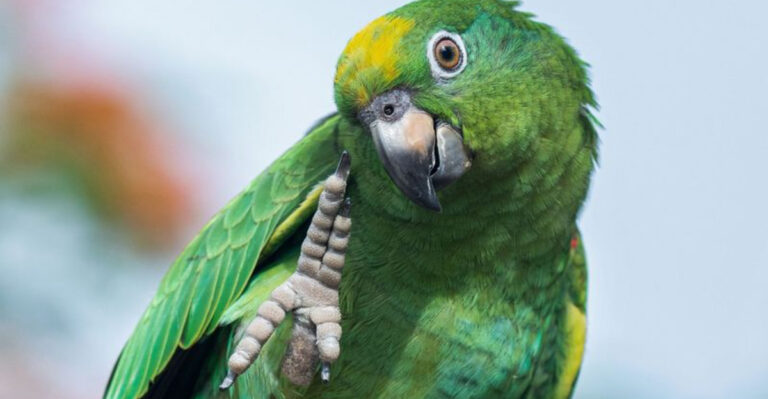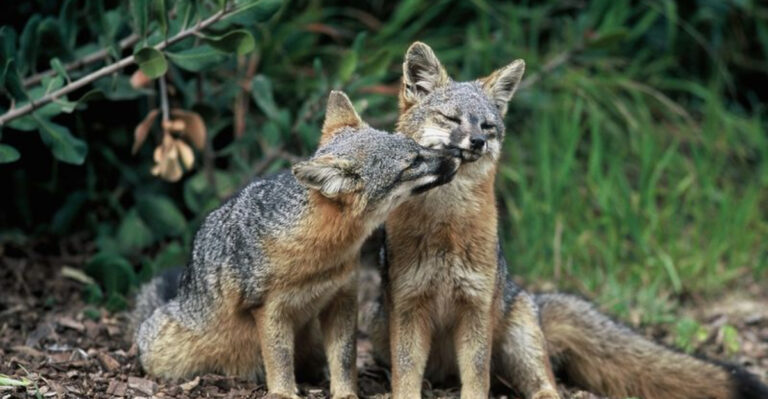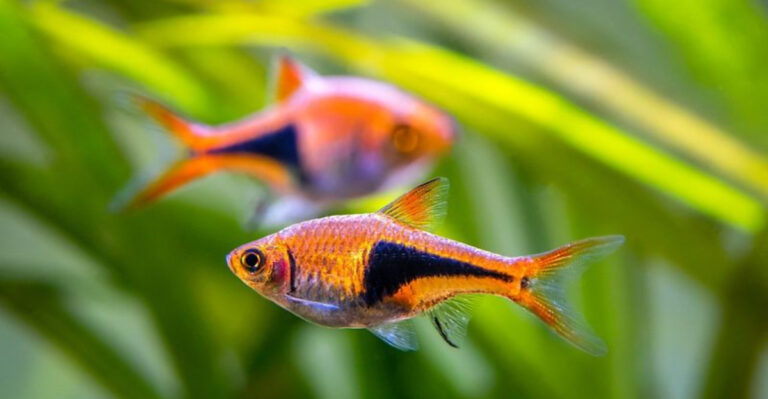11 Colorful Insects That Are Nature’s Works Of Art
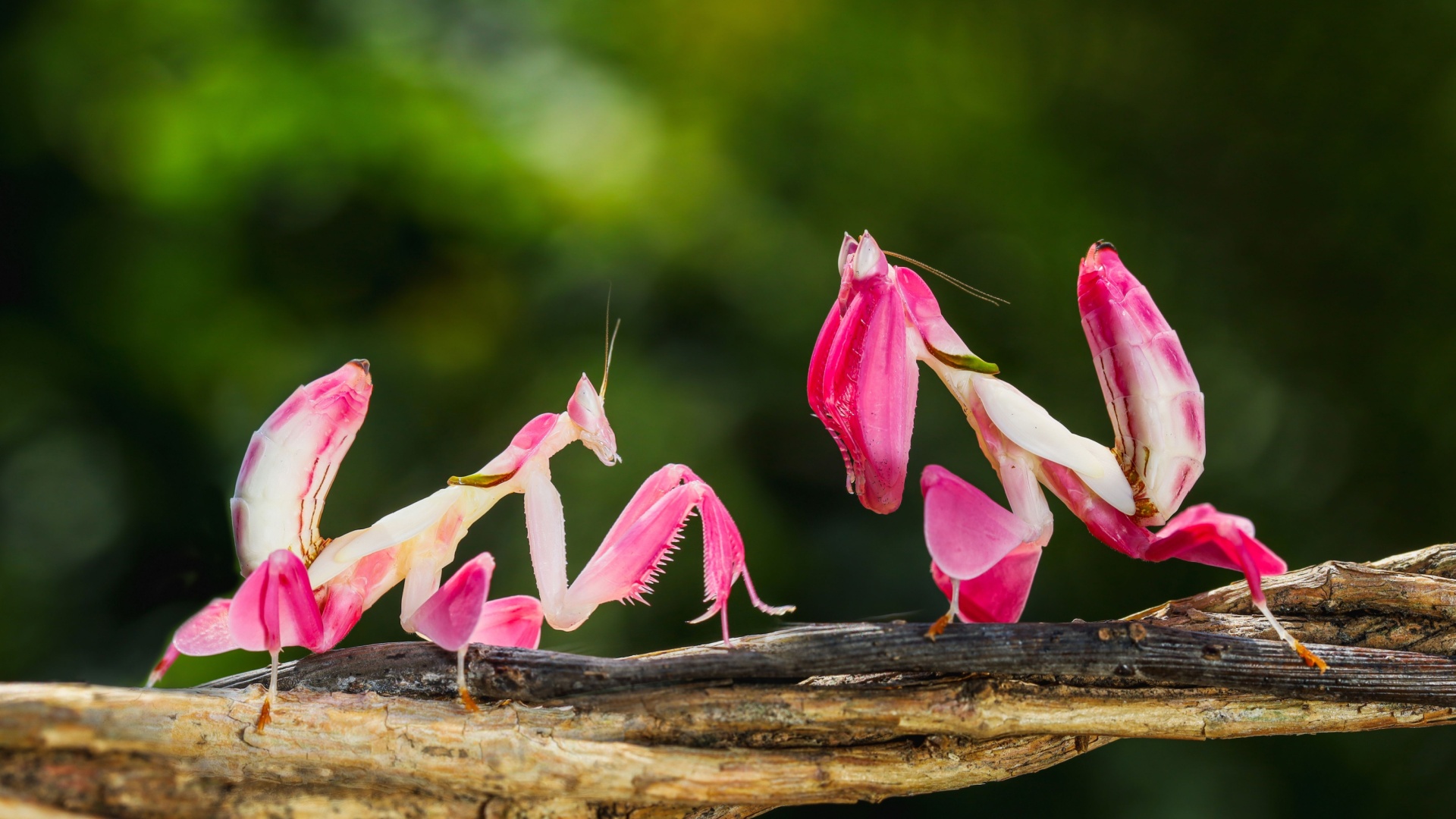
Nature is a canvas painted with vibrant colors, and insects are, without a doubt, some of the most mesmerizing strokes.
These tiny creatures, often overlooked, display an array of colors that rival even the most beautiful artworks.
Let’s explore these colorful insects that will leave you in awe.
1. Blue Morpho Butterfly
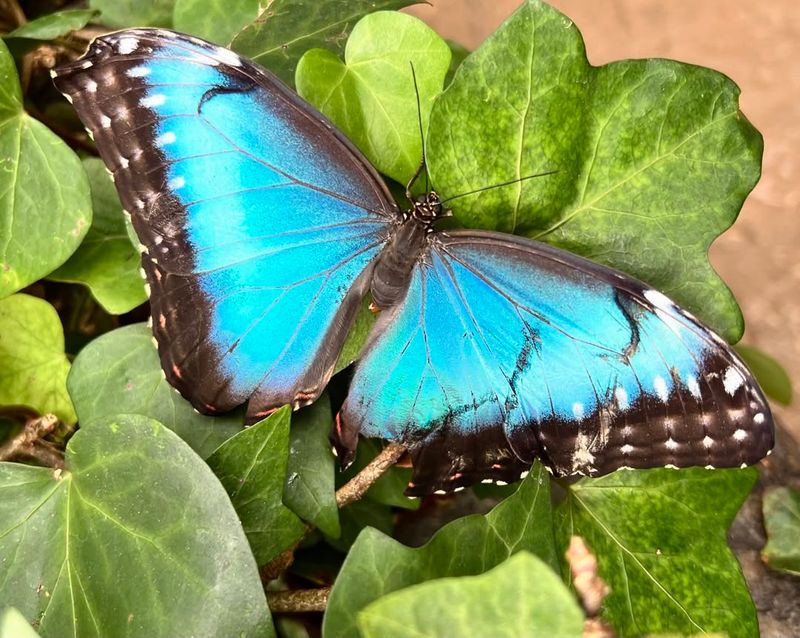
The Blue Morpho Butterfly is like a flying piece of sky. Its wings shimmer with iridescent blues that can stop anyone in their tracks.
Found in Central and South American forests, it flutters gracefully through the dense greenery. Its bright color is a predator deterrent, reflecting light to blend into the surroundings.
When resting, its wings fold to reveal brown, camouflaged undersides, a stark contrast to its vibrant exterior.
2. Sunset Moth
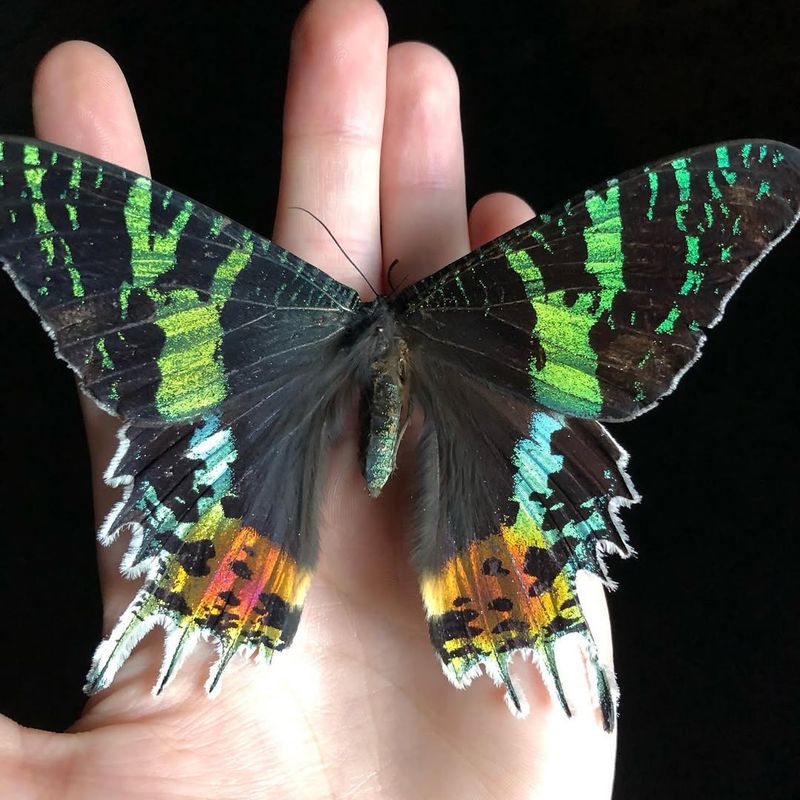
With colors spanning the spectrum, the Sunset Moth dazzles anyone lucky enough to spot it.
Originating from Madagascar, its vibrant appearance rivals any painter’s palette. The colors serve more than beauty; they warn predators of its toxicity.
Interestingly, this moth is active during the day, unlike most moths, making its vibrant display even more mesmerizing.
3. Orchid Mantis
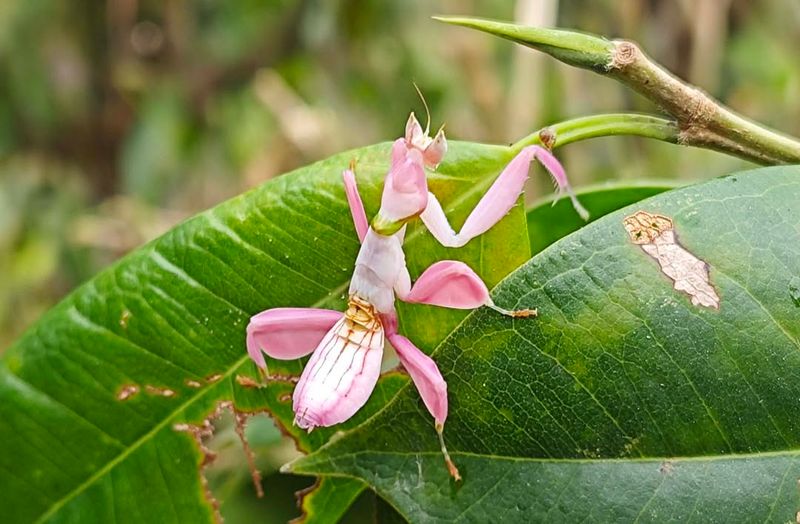
The Orchid Mantis masters disguise with flair. This insect mimics the appearance of orchid petals, blending seamlessly in floral environments.
Its color ranges from white to pink, complete with petal-like structures that make it almost invisible to predators and prey alike.
This mimicry isn’t just for show; it’s a tactic to catch unsuspecting insects that come seeking nectar, turning the hunter into the hunted.
4. Fiery Costus Butterfly
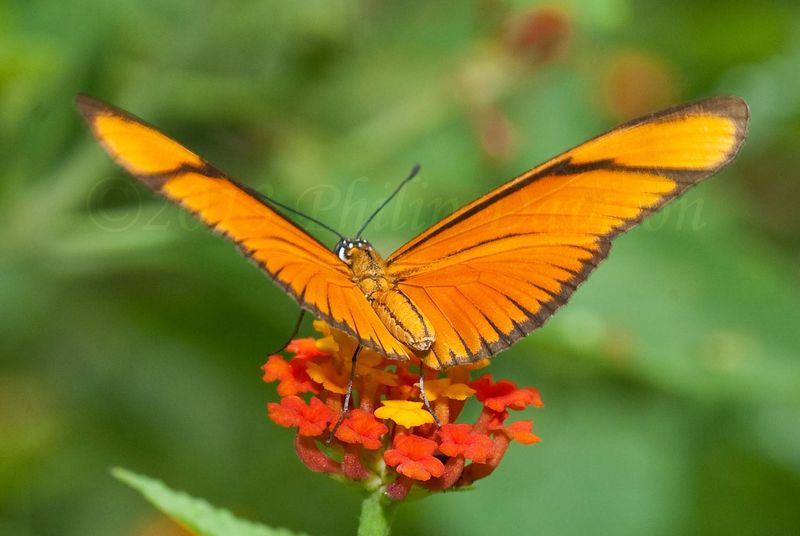
With intense oranges and blacks on its wings, the Fiery Costus Butterfly creates a blazing trail of color.
Native to Central America, it flits through gardens and forests, adding vibrancy to its surroundings.
The striking contrast in its coloration serves as a warning to potential predators. Its preference for sunlit areas makes its colors even more vibrant, creating a fiery spectacle in motion.
5. Emerald Swallowtail Butterfly
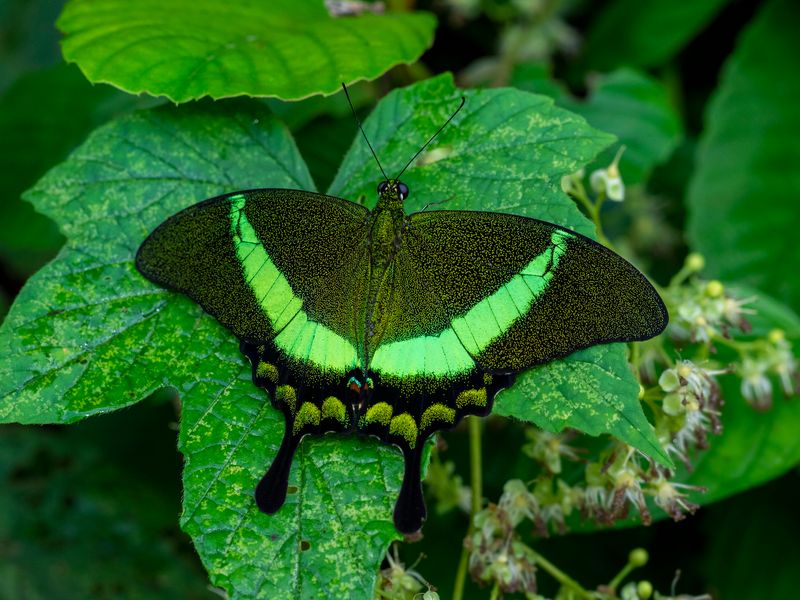
The Emerald Swallowtail Butterfly is a brilliant green jewel fluttering through the air. Its wings shimmer with emerald hues, contrasting sharply against the dark forest backdrop.
Its colors come alive in sunlight, reflecting a spectrum of green shades.
The mesmerizing display is not just for admiration; it helps in camouflage amidst the lush foliage.
6. Jewel Beetle
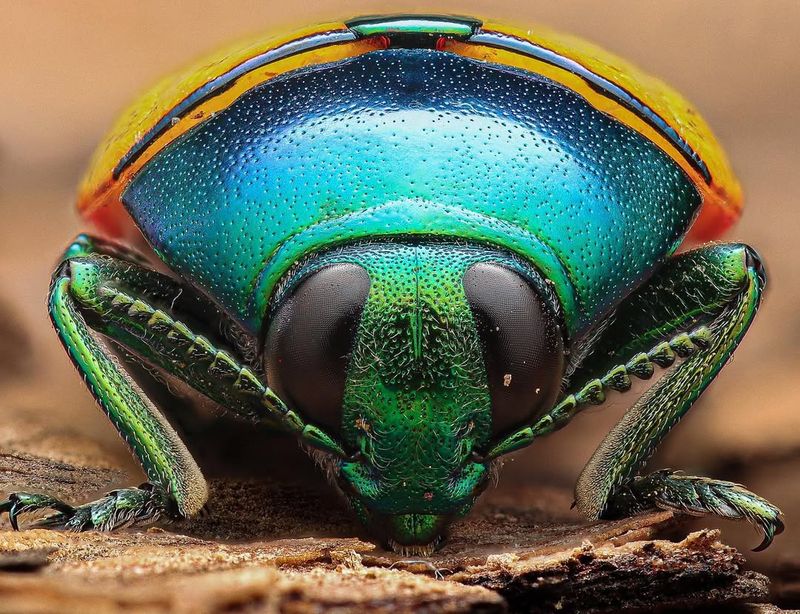
The Jewel Beetle sparkles like a gemstone. Its metallic colors, ranging from greens to blues and golds, attract attention effortlessly.
These beetles can be found in forests worldwide, adding a touch of nature’s opulence to the ecosystem.
Their brilliant sheen isn’t merely for show; it helps in reflecting light to confuse predators, a natural defense and aesthetic marvel.
7. Scarlet Swallowtail Butterfly
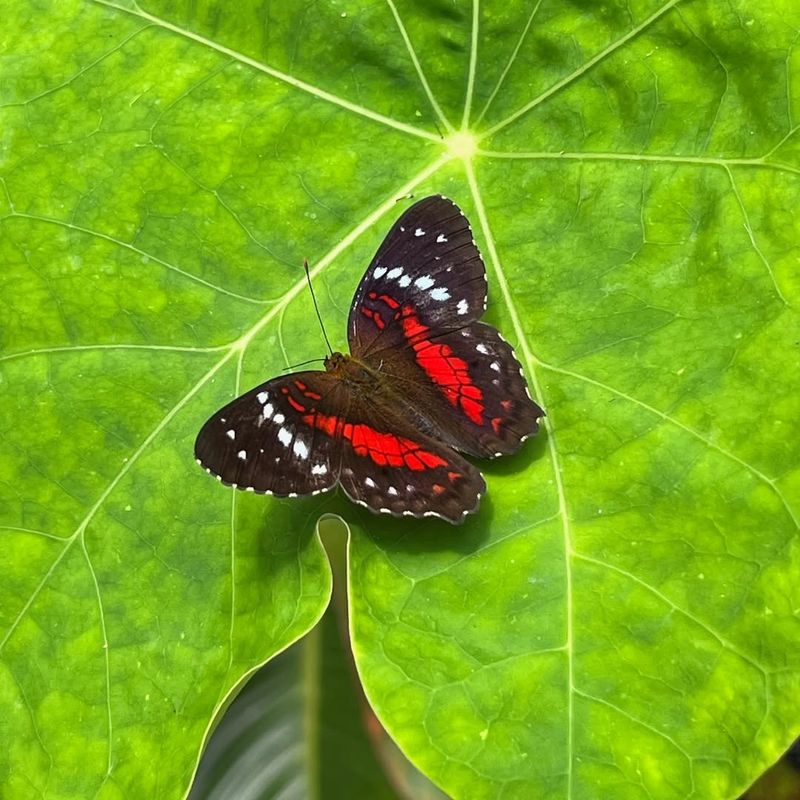
With red and black wings, the Scarlet Swallowtail Butterfly is a fiery spectacle in flight, catching attention with its bold appearance.
Native to Asia, it flutters through the air with dramatic flair, mesmerizing anyone nearby. The vivid colors serve as more than just a visual treat; they act as a warning to potential predators.
This striking display is not only beautiful but also a strategic survival tactic.
8. Rosy Maple Moth
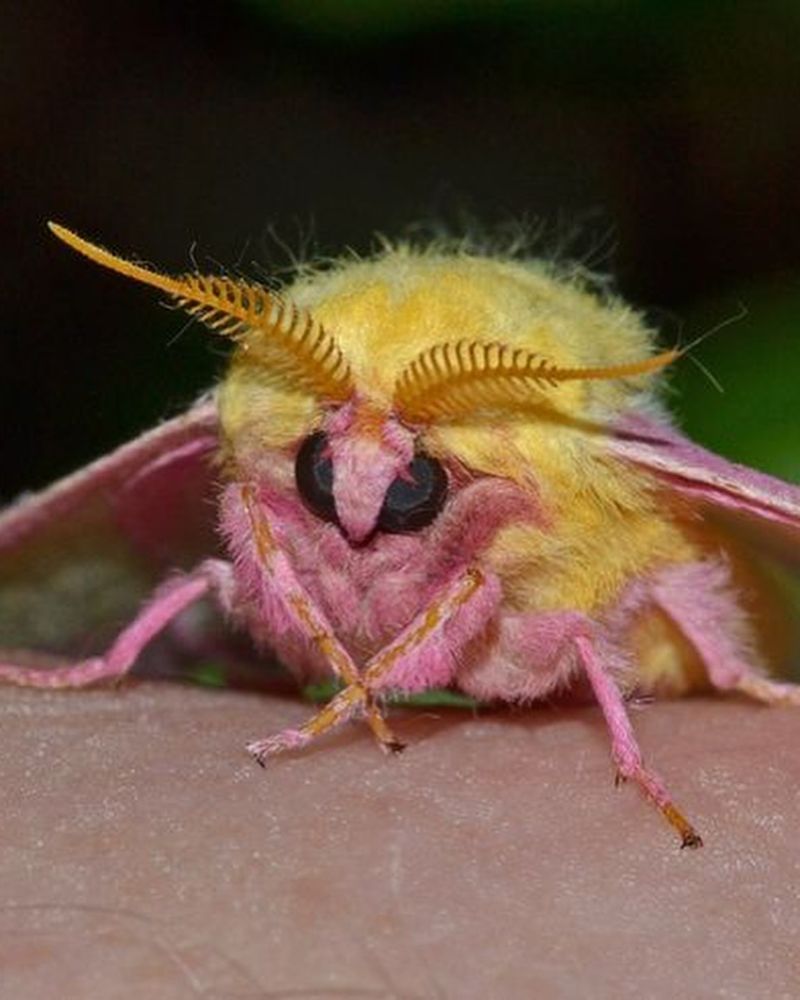
The Rosy Maple Moth is nature’s pastel fairy. With its soft pink and yellow colors, it resembles a cotton candy dream.
Found in North America, this moth adds a gentle splash of color to gardens and forests. Despite its soft appearance, it’s a robust little creature.
Its colors are not just for allure; they also serve as a warning to potential predators.
9. Painted Lady Butterfly
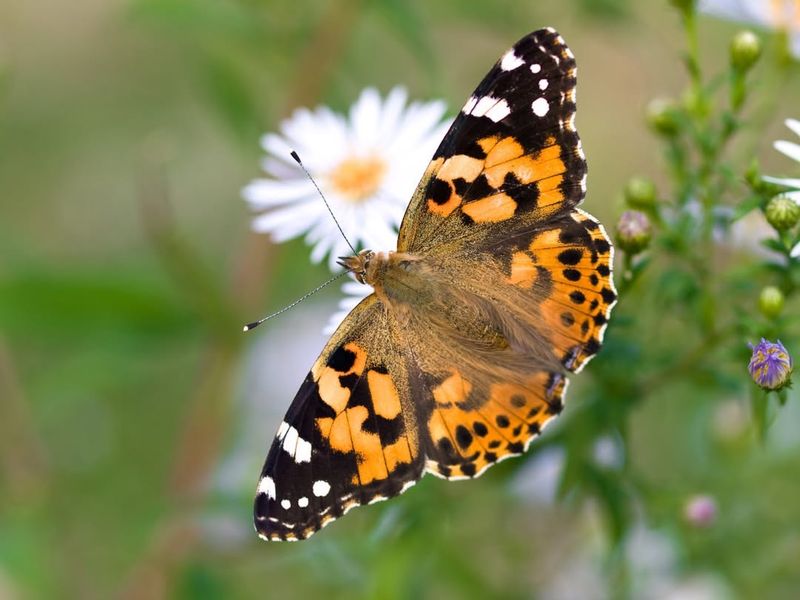
The Painted Lady Butterfly is a traveler, known for its long migrations. Its wings are a tapestry of orange, black, and white, creating an intricate, beautiful design.
Found worldwide, this butterfly adapts to various climates, showcasing nature’s versatility. The vibrant patterns serve as a deterrent to predators, signaling its unpalatability.
Its colorful journey across continents is a testament to nature’s resilience.
10. Peacock Swallowtail Butterfly
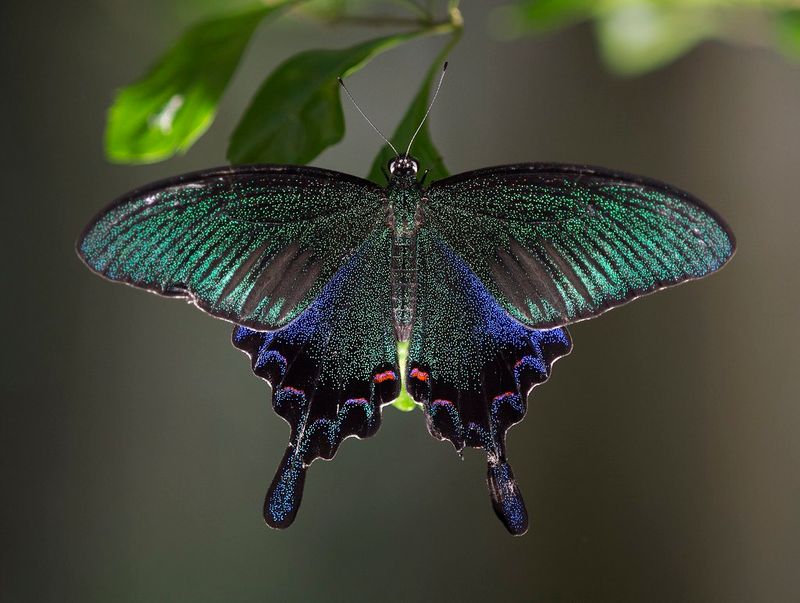
A sight to behold, the Peacock Swallowtail Butterfly showcases a captivating mix of blues and greens that shimmer in the sunlight.
Native to India, it glides gracefully through the air, leaving a trail of vibrant hues in its wake. Its radiant colors serve more than an aesthetic purpose – they help ward off predators.
Watching it flutter by feels like witnessing a moving masterpiece in nature.
11. Rainbow Grasshopper
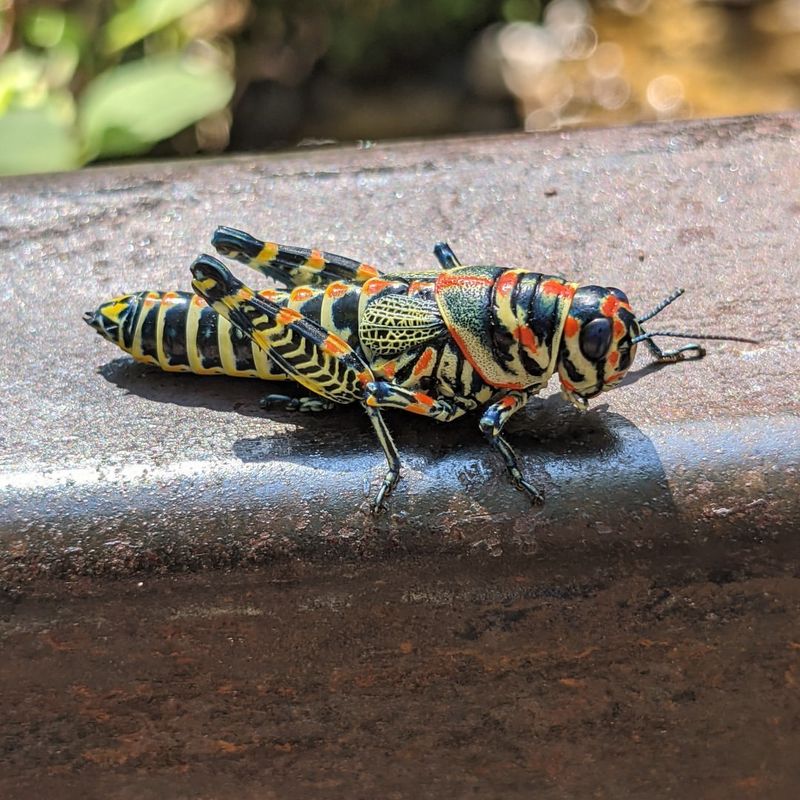
The Rainbow Grasshopper is a striking insect known for its vibrant, multi-colored body. Its wings shimmer with hues of green, yellow, red, and blue, making it stand out in grassy fields.
This grasshopper thrives in sunny, open areas where its colors seem to glow under the sunlight.
The brilliant colors not only make it a visual spectacle but also serve as a deterrent to predators, signaling that it’s not a typical grasshopper.

